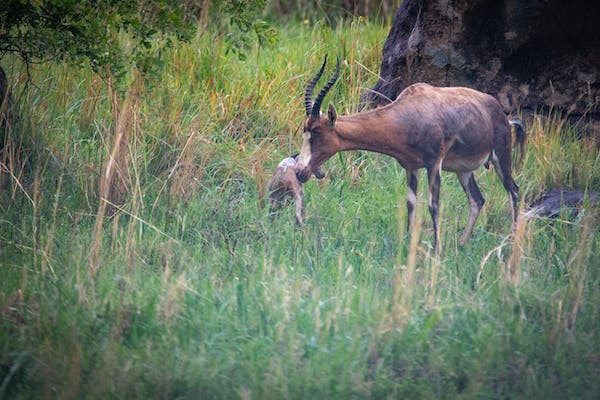After it was bequeathed to Zambia in 1904, the former ranch and colonial farmhouse, restored its wild state and soon was designated as a national wildlife park in 1972. This 410-square kilometer park is renowned for its variable habitats, fantastic birdlife, and distinct wildlife. Moreover, it serves as a home too hot springs, stunning rocks and caves, baobabs, and remains of Iron Age civilization.
Lochinvar National Park is located northwest of Monze, and consists of low-wooded hills, grasslands, the seasonally-flooded Chunga Lagoon, which in turn builds the vast, magnificent Kafue Flats. It is known for its large herd of Kafue lechwe, an antelope endemic to the Kafue flats, consisting of around 30,000 individuals.
Other animals that thrive include buffalos, zebras, oribis, and wildebeests, grazing on the vast grassy plains. Oribis, bushbucks, hippos, jackals, waterbucks, and reedbucks are also observed. Meanwhile, Lonchinvar’s shallows and mudbanks is a striking refuge for birdlife, with over 400 species recorded in the park.
At the southern region of the park, Combretum trees and Acacia albida are abundant, with baboons, vervet monkeys, and bushpigs settling in the primarily woodland area.
For geology enthusiast, the Gwisho Hot Springs, a National Monument site, lies in a fault, circled by ivory palms and abundant vegetation. Its water rises from depths of more than a kilometer, made possible by convention. The temperature ranges from 60 to 90 degrees Celsius, making the steaming water incredibly too hot to swim in. Saline deposits around the spring attract animals and watch some of them elated in licking its salt.
Nearby is the Sebanzi Hill, an archaeological and another National Monument site, has been excavated. It is a remnant of an Iron Age settlement that lived until the previous century. The surrounding Baobab trees are also a sight to behold, characterized by broad and hollow tree trunks. These trees are believed to possess majestic powers, providing travellers with protection from lurking wild animals.
The remains of two former lodges can be found in the park: the original, colonial red-brick Lochinvar, and the latter-day Lechwe Plain Tented Camp. However, both were not maintained by various tour operators who handled them over the years. With that, both sites have succumbed to dilapidation. While there are talks that they will be restored, it might not happen soon. If you’d like to enjoy this tranquil haven, which veers away from the renowned safari circuits, you may need to rely on self-camping. Make sure that you have your complete gear and ask the scouts for possible campsites within the park. Keep in mind that the facilities will be poor.
You can visit any time of the year, but much caution is need during the wet season, especially after heavy rains. Peak floods happen during May, while October and November have the lowest water levels at the end of the dry season. Birds are abundant during the wet season as migratory species arrive from the northern regions. However, game animals are easier to encounter during the dry season.

